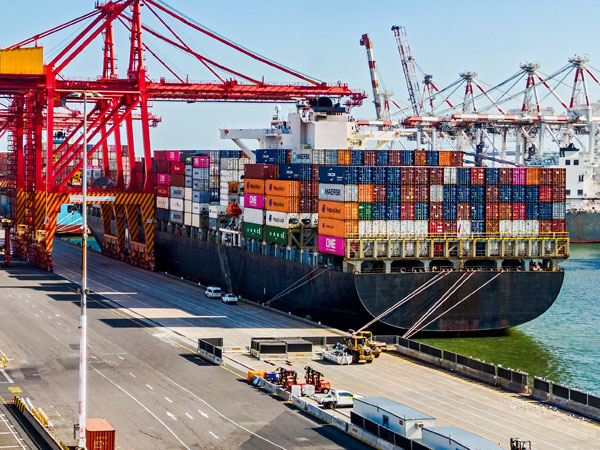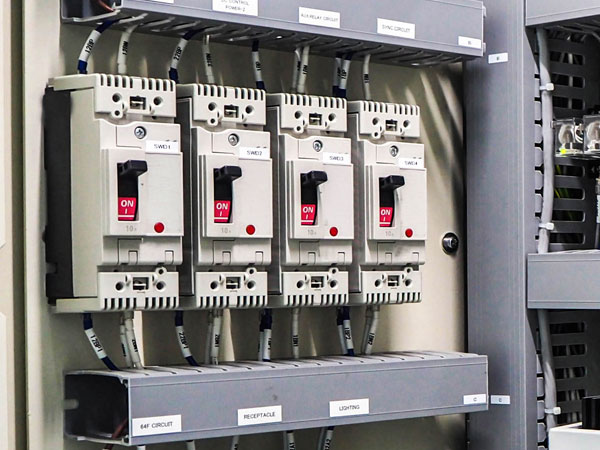May 19, 2025
The property and casualty (P&C) industry is built on a fundamental purpose: to support people and businesses when they need it most. Today, that ability is being tested by the widespread implementation of new and aggressive tariff policies.
The introduction of substantial tariffs has created profound uncertainty and cost volatility, impacting every facet of our industry’s work, from car repairs to rebuilding properties. At Sedgwick and EFI Global, we see the daily impact of these policies on our clients, partners and industry. We believe that by understanding these challenges and leading with our purpose, we can weather this storm to emerge stronger and more resilient.

Understanding the impact of tariffs
The current tariff environment is more than a series of import taxes; it’s a catalyst reshaping the economic landscape. Its impact is multifaceted, amplified by global pressures like pre-existing supply chain vulnerabilities, pervasive inflationary trends, currency fluctuations and broader geopolitical instability. For the P&C industry, this means operational and strategic challenges.
In this environment, businesses now fall into one of two categories. Recognizing which category an insured or prospective client falls into is now crucial for accurate risk assessment and effective claims management:
- Tariff-impacted businesses: These businesses are directly in the line of fire. They often rely heavily on imported goods or components from tariff-targeted regions, operate with thin margins and have complex international supply chains. Tariffs aren’t just an inconvenience for them – they’re an existential threat.
- Tariff-resistant businesses: These businesses are more resilient. They have domestic or diversified supply chains, possess stronger pricing power and serve less price-sensitive markets. While not entirely immune to broader economic effects, they’re less vulnerable to tariff-driven cost spikes.
Tariffs are disrupting the P&C claims process through several key mechanisms:
- Direct material cost escalation: Tariffs are driving up costs for materials like steel, aluminum, lumber, technology components and automotive parts, significantly increasing overall claim costs for auto and property.
- Pricing volatility and quotation uncertainty: Unpredictable pricing is making it hard for contractors and suppliers to provide long-term fixed-price bids for projects. This is dramatically shrinking quote validity periods, leading to compressed decision timelines and an increase in supplements.
- Supply chain disruptions: Tariffs are causing supply chain shortages and delays, resulting in extended repair times, increased claim cycle times and exacerbated costs for additional living expenses and business interruption.

- The overhead and profit (O&P) multiplier: As material costs rise, the base for calculating contractor O&P also increases, compounding total claim costs.
- Policy interpretation challenges: Tariffs are testing standard policy language around “Like kind and quality,” actual cash value and period of restoration. These ambiguities may lead to more disputes, an increase in appraisal under policy and eroded policyholder trust.
- Business interruption: In our tariff environment, supply and demand restraints mean some businesses are benefiting while others are suffering. Tariffs can drastically and suddenly change a business’s operations and profitability.
Real-world example: the network restoration dilemma

A large commercial and residential property experienced severe water damage affecting its building automation, smart door entry controls and Wi-Fi network. An engineering firm quoted over $100,000 for a full system replacement but couldn’t guarantee the hardware pricing because the components had to be sourced almost entirely from international manufacturers facing extreme tariff volatility.
This price uncertainty led to the property owner facing prolonged disruption, the insurer dealing with unpredictable costs and the vendor risking significant financial loss from tariff hikes.
To help get the property functional again, Sedgwick and EFI Global quickly identified solutions like modifying contract structures, pre-purchasing materials and finding alternative equipment for restoration. This incident is a clear example of how tariffs disrupt the claims process, demanding new levels of agility, communication and problem-solving.
Our framework for navigating the tariff test
In the face of disruption, our industry’s response must be anchored in our core purpose of supporting people and businesses when they need it most. To navigate tariffs with a principled, resilient and technology-enabled human-centric approach, Sedgwick and EFI Global are:
- Building trust through clear, honest communication and actively listening to client concerns.
- Updating vendor contracts to be more flexible and responsive to a volatile environment.
- Investing in supply chain intelligence to make informed decisions and effectively guide policyholders.
- Leveraging real-time insights and predictive analytics to manage financial risks and set realistic expectations.
- Evolving our products and policies to address changing risks and keep our clients safe.
- Empowering colleagues to handle tariff-impacted claims fairly and effectively.
- Fostering collaborative vendor partnerships that build mutual resilience and stability.
Playing the infinite game: our enduring commitment
The tariff landscape is a significant test, but it’s just one challenge in the infinite game of the P&C industry. Our goal isn’t to overcome tariffs; it’s to continually strengthen our ability to provide security and restore livelihoods, no matter what external pressures arise. This means looking beyond short-term fixes and investing in the long-term resilience of our people, processes and partnerships.
As tariffs change and trade policies shift, new challenges will undoubtedly emerge. But by deepening our commitment to our purpose, we’ll not only navigate the current turbulence but build a more resilient and trusted industry for generations to come.
Tags: Casualty EFI Global Property



